From - Sky & Telescope
By - David Dikinson,
Edited by - Amal Udawatta,
The first surface image received from Chandrayaan 3.
ISRO
The landing occurred near Manzinus U Crater on the lunar nearside at 12:34 Universal Time (UT) (8:34 a.m. Eastern Daylight Time, or EDT) on Wednesday, August 23rd. This makes India the fourth nation to soft-land on the Moon, after the United States, the former Soviet Union, and China. ESA’s European Space Tracking system (ESTRACK) and NASA’s Deep Space Network (DSN) partnered with ISRO to provide global tracking coverage for Chandrayaan 3.
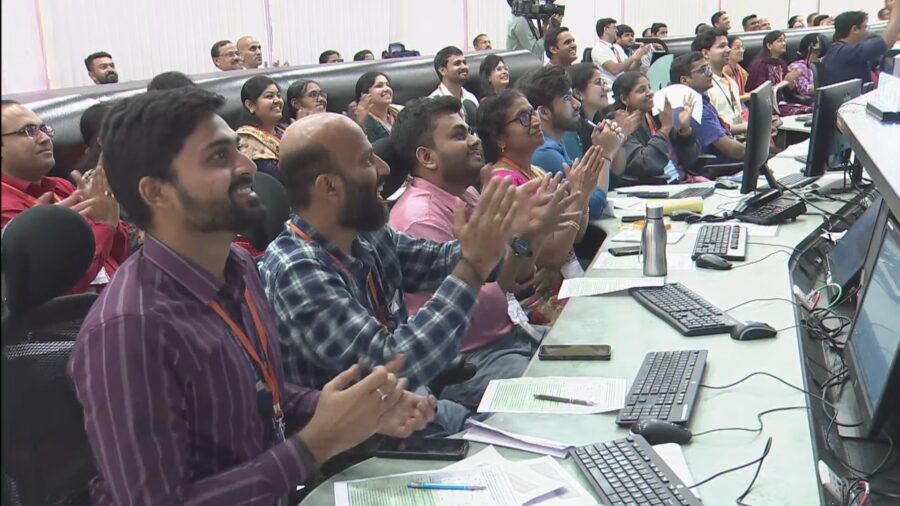
This landing also makes India the first nation to successfully touch down in the lunar south-pole region. The crewed Apollo missions landed on the lunar nearside at lower latitudes, and even the historic farside landing of China's Chang’e 4 craft in 2019 only reached some 45°S. Chandrayaan 3 reaches 69°S. Exploring the polar region of the Moon is the new game in lunar exploration, as some permanently shadowed craters at the poles harbor water ice.
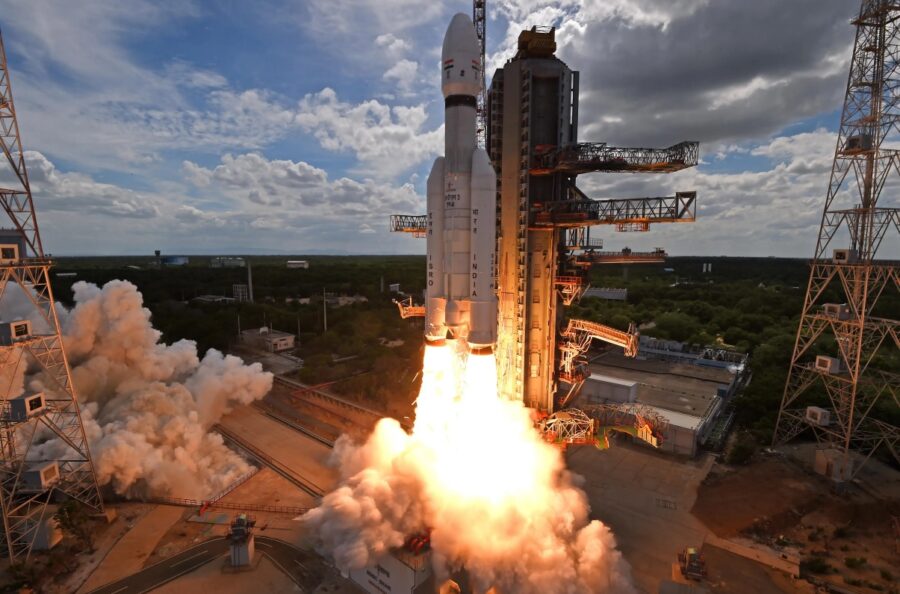
Launched on an LVM 3 rocket from Satish Dhawan Space Centre on July 14th, Chandrayaan 3 entered lunar orbit on August 5th after a series of boosting maneuvers. The 1,752-kilogram (3,862-pound) Vikram lander separated from the upper stage on August 17th in preparation for landing. The lander also took a sequence of images of the primary landing site this past week from low lunar orbit, for engineers to analyze prior to the final landing approach.
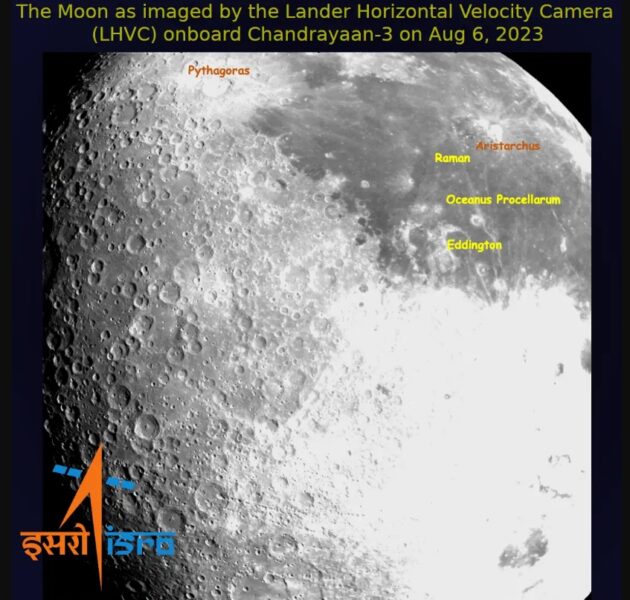
The primary mission for Chandrayaan 3 is to demonstrate the soft-landing capabilities for the Vikram lander, deploy the 26-kg Pragyan rover, and examine the lunar surface. To do this, the lander and rover are equipped with a suite of instruments, such as spectrometers and a Langmuir probe to measure plasma density at the lunar surface. The solar-powered mission is expected to last the remaining 12 days, until local sunset. There was talk of delaying the landing until August 27th, but that would have burned precious daylight time on the lunar surface and perhaps necessitated a landing at an alternate site.
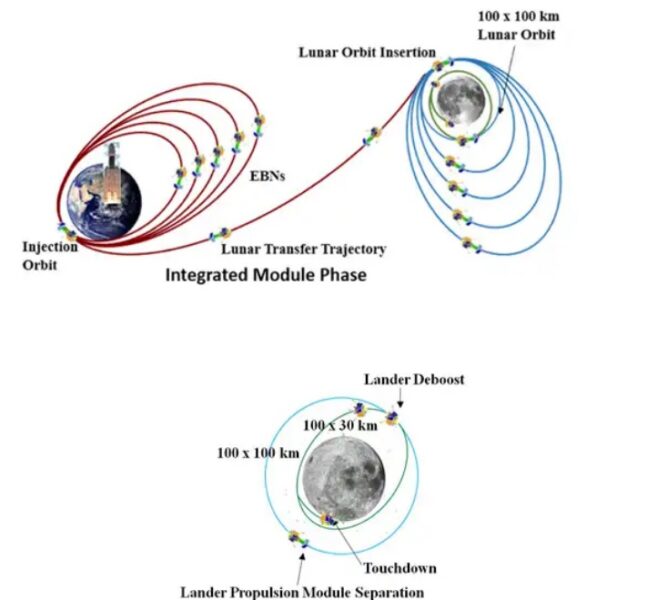
INDIA AT THE MOON
Chandrayaan 3 follows the legacy of ISRO lunar exploration going back over a decade now, including the Chandrayaan 1 orbiter and impactor in 2008 and Chandrayaan 2 in 2019. India also fielded its successful Mars Orbiter Mission to the Red Planet on the first try.
Russia almost beat India to the lunar south pole earlier this week. However, a failed orbital maneuver sent the probe on an unplanned trajectory. On August 21st, the Russian news agency TASS confirmed that Luna 25 had impacted the Moon near Pontécoulant G crater two days prior.
The crash of Luna 25 follows a spate of recent failures to land on the Moon, including the ispace Hakuto R lander earlier this year and Israel’s Beresheet lander and ISRO’s Chandrayaan 2 Vikram lander, both in 2019. The smallsat Omotenashi lander that hitched a ride aboard Artemis 1 also failed to reach the Moon.
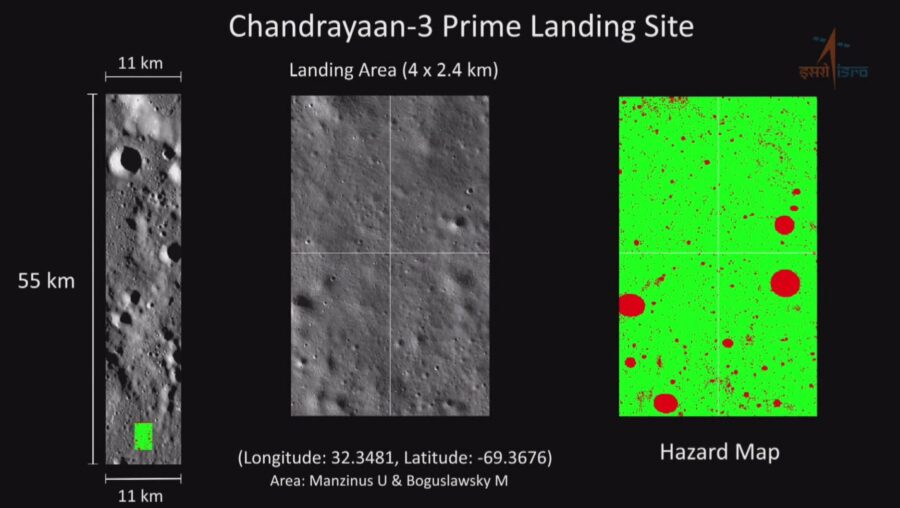
Chandrayaan 3 built off lessons learned from the landing failure of Chandrayaan 2, with several changes made to the laner's configuration. The orbiter is also stripped down compared with the Chandrayaan 2 orbiter (which is still operational), but it does have one experiment onboard, the Spectro-polarimetry of Habitable Planet Earth (SHAPE) experiment, designed to examine Earth as though it were a (very close) exoplanet.
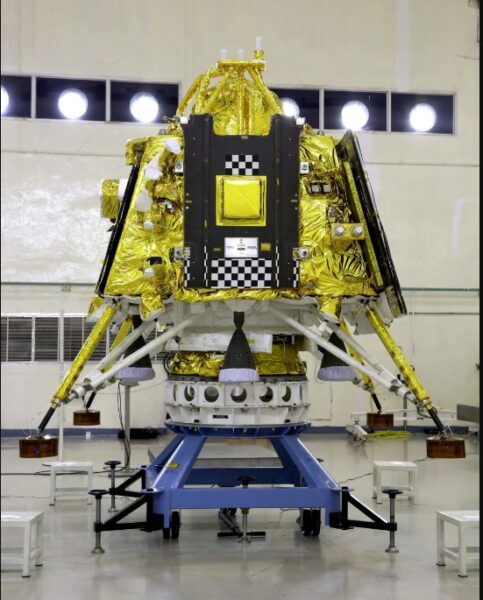
The new lunar space race is just heating up in 2023. Coming right up this weekend we have the Japan Aerospace Exploration Agency’s (JAXA) Smart Lander for Investigating the Moon (SLIM), which will launch on August 26th alongside the joint JAXA/NASA XRISM X-ray observatory. Later this year, Astrobotic Technology and Intuitive Machines will both launch their bids to become the first private companies to land on the Moon. And next year, watch for NASA’s VIPER rover to land on the Moon and the launch of the Artemis 2 lunar flyby mission, the first crewed mission to cis-lunar space since 1972.
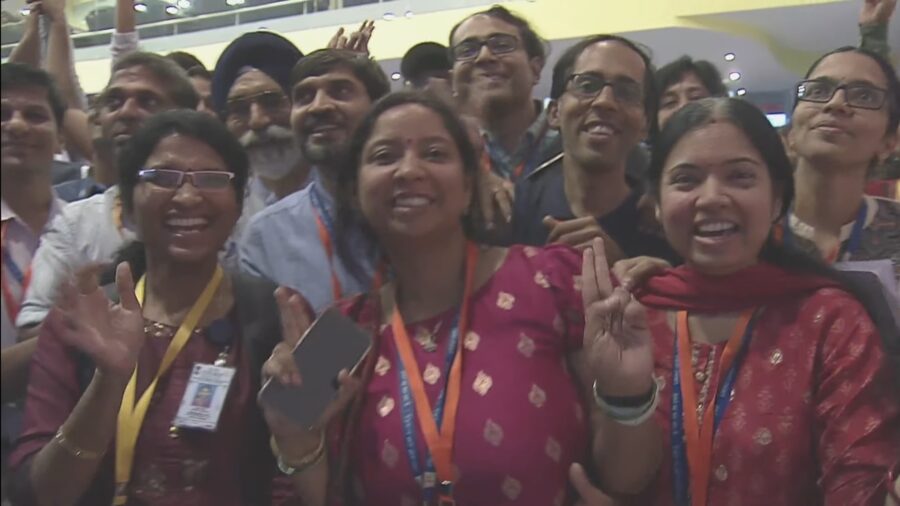
The Moon is about to become a busy place. With the high-latitude landing site for the Vikram lander, expect to see views of the blue marble of Earth hanging low over the lunar landscape in coming days. If skies are clear, be sure to check out the waxing crescent Moon tonight, hosting a new robotic emissary from the Earth.

Comments
Post a Comment